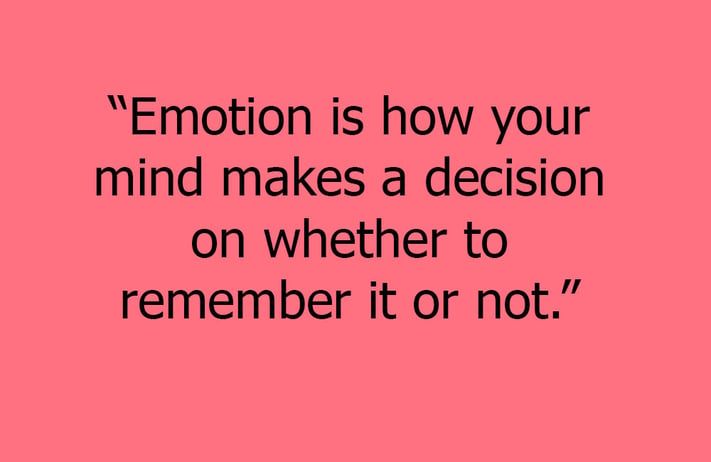If you have been around the block a few times in business, you will know that effective teams don’t happen by accident. So what if the key is effective team communication?
When it comes to running a successful organisation, teamwork is now viewed as almost as important as individual performance. Motivating people to work hard for a common goal is crucial for running an innovative business. And effective workplace communication at every level - starting at the top - is the key factor to achieving success in this area.
So how can we make sure that our conversations are positive ones? And that they’re leading to the desired end result?
Here we look at some effective workplace communication skills to make sure the performance of the teams working within your organisation delivers consistently great results.
Empathy and active listening
One unhappy person can create negative vibes that gradually eat away at the team spirit. Don’t let negativity get a foothold. As the leader, creating a culture of openness and transparency is vital. One method is to give people an outlet for their feelings and concerns. This could be as simple as arranging a 10-minute meeting every morning to allow people to share their current challenges and ask for support.
As the manager, it's great to get into the habit of actively listening. Not only to respond or move things forward but listening using your intuition and empathy to read other signals such as body language, tuning into the underlying emotions of your team. This kind of listening gives you a more detailed picture of what's really going on inside the hearts and minds of your team.
You can learn a lot by taking note of non-verbal cues such as shortness of breath, speed of speaking, posture and arm position. Also, the tone of voice is just as important as the words people choose. If a team member is standing with shoulders hunched, speaking in a monotone voice and not making eye contact, chances are something is wrong. Even if they say there isn’t. Using empathy to help them express their feelings is the first step in supporting them to a resolution – for the good of both themselves and the team overall.

Value-driven stories
For your staff to perform at the highest level possible, every member needs to feel motivated, inspired and valued. This is what makes them want to work hard. Traditional KPIs and performance-related targets can be effective in the short term. But if it’s real drive and determination you’re looking for, you’ll need to find a deeper meaning for your workforce – a connection to core values that all the group share.
Invest time in harnessing the power of stories. Stories that demonstrate your key values and speak to the emotions will stick. They’ll get others to invest in your mission too. As an entrepreneur and international business speaker, Eric Edmeades says, “Emotion is how your mind makes a decision on whether to remember it or not.” So when you’re in the game of convincing people to do something, don’t resort to threats or bribes, take them on an emotional journey by telling a story, give them a shared purpose, a clear ‘why’ that resonates with their inner self. After all, they say ‘your why should make you cry’, so that it has the power to drive you forward every day. Help your team find their shared ‘why’.

Psychological safety
Nothing crushes creativity more than fear. It could be fear of coming up with ideas that don’t make the grade, of ‘looking silly’ in front of colleagues, or fear of judgement. In her Netflix special, The Call to Courage, released earlier this year, author and public speaker Brené Brown talked about the importance of vulnerability in the workplace, suggesting that unless we are allowed to be free of the fear of shame and criticism the real magic will not be able to happen. “True belonging,” she says, “doesn’t require us to change who we are, it requires us to be who we are.”
It is human nature to feel threatened by criticism. The idea that if we make a mistake, there will be consequences is often ingrained in us from an early age, so it’s a difficult thing to overcome. But when everyone is allowed to be themselves, without the pressure to get everything right all time, trust, innovation and creativity will naturally follow. In fact, a two-year study into team performance conducted by Google’s People Operations (or HR) team found that the most important indicator of high performance was psychological safety. Therefore, it’s not something to be taken lightly.
As a leader, it’s your role to facilitate this. To create a team culture where all members feel safe and secure, with the ability to be honest and open up about how they feel. And you must be able to lead by example. Instead of issuing orders, learn to ‘coach’. Rather than giving instructions, ask for input. Try “We need to achieve X, what do you see as our options?” And then listen actively and with an open mind.
Work to align company and team goals with personal ones. Share your own story and be upfront about your own goals and remember to ask others about theirs. Motivate your team individually and collectively by acknowledging their journey and taking your place alongside them for the ride.

Embrace difficult conversations
Linking to the previous point, to create an open, safe space - a place of mutual respect - it’s important to keep all communication and feedback constructive. Frustrations need to be dealt with before they stew and escalate into full-blown conflict.
The best way to do this is to encourage ‘non-violent communication’. In his book on the subject, Marshall B. Rosenberg talks about this as a way of being able to “ask for what you want, hear others even in disagreement and move towards solutions that work for all.” In short, you can approach difficult conversations positively.
Non-violent communication helps us avoid over-dominating a conversation. Instead, we approach a potentially awkward conversation by understanding the feelings and values of the other person. We take responsibility for our feelings and needs rather than blaming others, using the words ‘I feel’ not ‘you did’, and we ask directly for actions to be taken. In return, we listen with empathy and understanding before responding thoughtfully, considering the solution from a place of shared values.
This communication strategy is a powerful way to help members of a team realise we are all humans with the same basic needs and motivators. We just express ourselves in different ways. The freedom to approach difficult conversations without fear can be liberating. We just need to make sure that non-violent communication is demonstrated from the top of the organisation, so it becomes the culture of the team.

Demonstrate efficient and effective team communication
How often have you told someone you’ll do something and then failed to keep your end of the bargain? You probably fully intended to do it, but then other tasks got in the way, and you deprioritised it in favour of something else, right? But that niggling worry that you never got around to doing it probably haunts you, doesn’t it?
Reliability is an important trait when you’re looking to create a high-performing team. It’s the difference between talking about things and actually doing them. Build an understanding among all team members that you expect honesty. ‘Maybe’ should be avoided in favour of a definite ‘yes’ or an honest discussion about what is realistically possible so that everyone is clear. Once a task has been agreed, there should be an understanding that it is to be done by a set deadline.
Keep meetings short and productive. Structure and plan the discussion upfront and follow the agenda logically, without straying away from relevant points. Allow everyone the opportunity to speak but keep conversations at the right level for the audience. More detailed discussions may be more appropriate for another time. Summarise the agreed actions at the end and avoid hours of wasted chat.
Building a high-performing team will no doubt improve the productivity and profitability of any organisation. But it is about much more than that. It’s about motivating players within that team to achieve their full potential. It’s about getting each person on board and giving them a place to feel listened to and protected, so they will be happy to show up and fully engage in everything you want to do.
Only then, when your team are happy to fail as many times as it takes to make the magic happen, will you see the creative, innovative results of your efforts - as well as the financial ones.
When you’re looking to motivate and engage at both a personal level and a team level, in the words of Simon Sinek, “start with why.”
If you feel like there are communications issues in your team, and want to put strategies in place to develop kind, authentic and effective teamwork, we run bespoke workshops for businesses that go beyond regular presentation skills training. If you'd like to find out more, book a free consultation call where we discuss the unique goals and challenges of your team.


